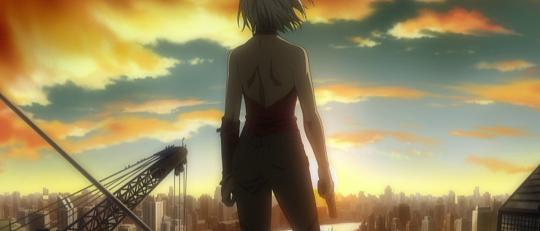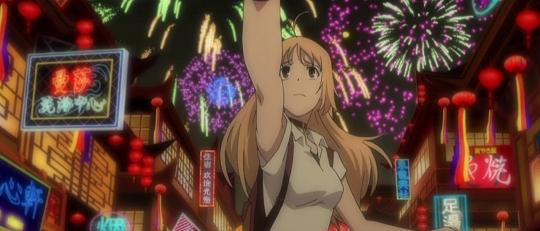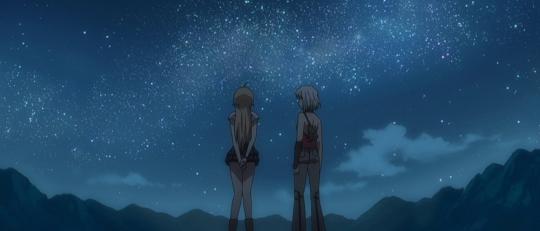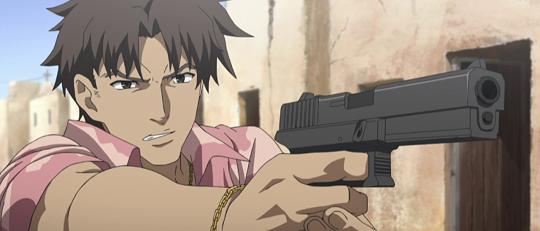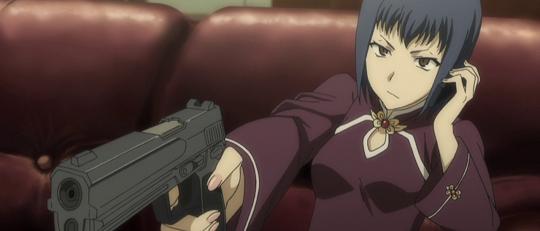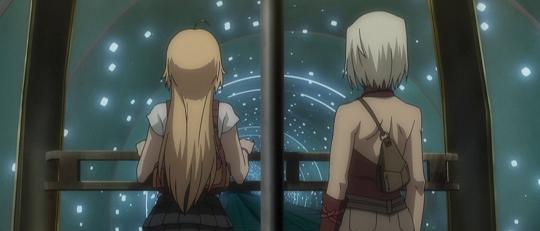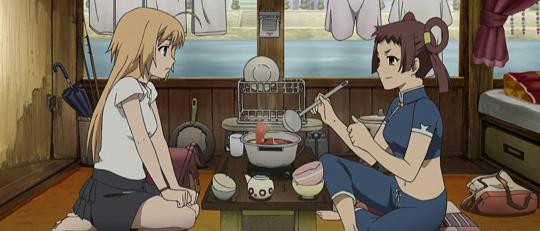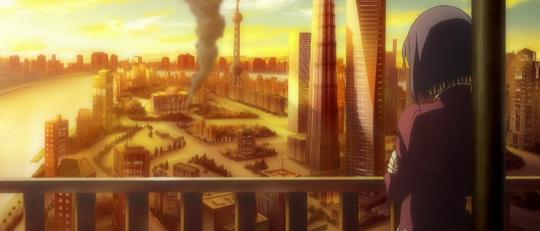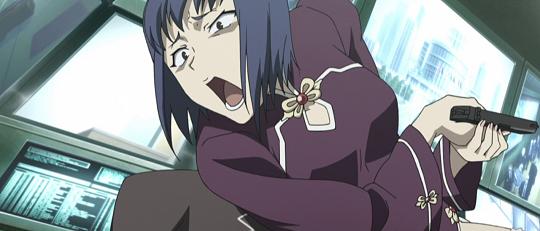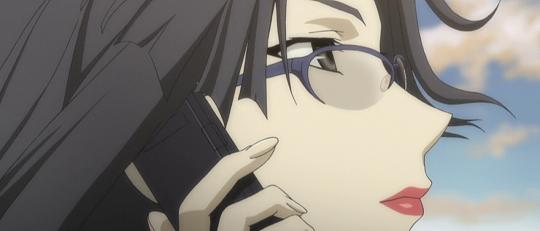First released: July 2009
Version reviewed: BluRay
A lot of media start right in the thick of things, in media res, but Canaan is the only series I’ve seen that seems to start at the end of things, ad finem. As if all of the interesting development has already happened and this is the epilogue where the elves are sailing west. Wikipedia informs me however that Canaan is in fact a sequel to a Japanese-only Wii game and “conceptualised” by Type-Moon (of Kara no Kyoukai and Fate fame) co-founders Kinoko Nasu and Takashi Takeuchi. Whether having played that game helps in understanding the series is unknown, though unlikely given it shares only a few characters, one of whom is secondary at best.
The broad strokes though: photographer Maria Osawa and journalist Minoru Minorikawa travel to Shanghai to cover an anti-terrorism summit. Maria reunites with an old friend, Canaan, who is a mercenary for hire and possessed of the gift of synesthesia, allowing her to see odours and hear colours (amongst other things). A fine setup, but proving the exception to the rule that anything Type-Moon touches turns to gold, Canaan as a series is like the parade in the first episode: colourful, chaotic, and thoroughly unintelligible. How could it go so wrong?
To be fair this isn’t a "true" Type-Moon work with prolific writer Mari Okada (The Pet Girl of Sakurasou, Nagi no Asukara, Lupin III: The Woman Called Fujiko Miine) penning the series with only the manga being a canon Type-Moon entry. It does bear the hallmarks of her less coherent compositions though such as Book of Bantorra and the second Darker than Black series, but what makes it especially disappointing is that no single element lets the series down but the accumulation of different, more minor grievances.
At the heart of this is a surprising lack of a thematic core. Good series will explore one or two themes - the trials of creativity and dealing with the artistic skill gap in The Pet Girl of Sakurasou for instance - but here there are barely any. There is the light touch of “relationships that have changed during absences” with Maria and Canaan, a theme better explored in Nagi no Asukara, as well as the burden that the name “Canaan” lends to the pale haired protagonist and serial terrorist Alphard. Beyond that though there is just the steady plod of the story as it busies itself with wrapping up a series of unbelievable situations.
The series’ midpoint is the anti-terrorism summit that Maria and Minoru travelled to Shanghai for, but when it all goes wrong (no spoilers there) there is no sense of pressure or drama and any peril the characters may be in feels strangely neutered. It’s not that the story pulls any figurative or literal punches - there is everything from sadism to necrophilia to body horror and bioterrorism - but there are enough guns pulled on Alphard and for her to remain steely eyed to make everything come across as a bit rote.
That extends to the relationships as well, because despite the obvious affection between Canaan and Maria - to which some have attributed romantic love despite no evidence to support this - their friendship never quite gels. The same too goes for the buddy-cop style pairing of Maria and Minoru or Alphard’s lukewarm status as Canaan’s arch nemesis. Individually the components should work and cohere into an enjoyable, atypical action show but instead everything scrapes against each other like rusty clockwork; it still functions but nowhere near as well as it should.
The side effect of this is that other elements, which otherwise wouldn’t be an issue, become all the more pronounced. So the back story that involves the Ua virus and military backed experiments is never truly explored, leaving Canaan’s connection to them and her near magical synesthesia unexplained. What is explained tests one’s patience, like having the US president deliver a “Love and Peace” keynote speech, or the at first wonderfully unhinged Liang Qi fighting in nothing but skimpy negligee, or having Jouji Nakata, a Type-Moon favourite, as an over-the-top taxi driver.
Everything accumulates and aggravates until eventually you either give up or, if you’ve invested enough time, see it through to the lacklustre end. It is thankfully very good looking, the blu-ray version especially so, with a fanatical attention to detail when it comes to military hardware - guns, planes and helicopters all get the star treatment - although you may begin to wonder whether that’s at the expense of the two lead males who look almost identical; without their signature clothing it would be nigh on impossible to tell them apart. Animation is similarly up to snuff with slick and brutal action set pieces interspersing some lovely vistas, even if the chosen locales aren’t entirely memorable.
The end result then? It’s a series that you can’t say is terrible in one specific way; it’s ambitious and unique with characters and a setting that I haven’t seen used anywhere else, but it fundamentally doesn’t hang together anywhere near as well as its pedigree suggests it should. Disappointing and not entirely without merit but hard to recommend.
